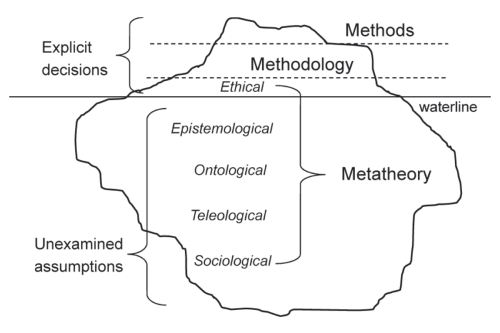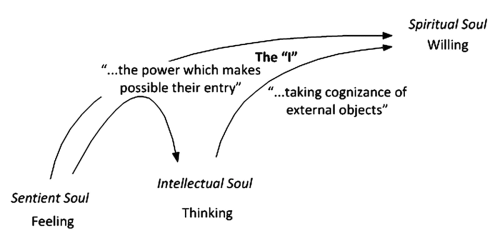Evaluating Integral Metatheory

Evaluating Integral Metatheory
More Posts from Sigilheart and Others



Magical and Amuletic scroll of Franz Anton Buechler
[Germany, 17th century]
Lavishly illustrated with 56 various amulets and sigils drawn from Heinrich Cornelius Agrippa’s De Occulta Philosophia and Johann Baptista Großchedel’s ‘Magical Calendar’, as well as medieval grimoires and the Clavicula Salomonis, this scroll was designed to invoke powerful spiritual and angelic protections for its owner, 17th-century magician Franz-Anton Buechler.

How to Organize Your Holon “Congratulations! Yes, congratulations on your decision to form your Holodynamic Holon. A Holon is the first level of organization in the Holodynamics Society. It consists of 6 or more individuals who meet together weekly to study Holodynamic principles, apply the processes, and expand their holodynamic influence into the community and across the world.”


The Calendarium Naturale Magicum Perpetuum is a late renaissance (c.1619 or 1620) grimoire and esoteric print of calendar engravings. Its full title is Magnum Grimorium sive Calendarium Naturale Magicum Perpetuum Profundissimam Rerum Secretissimarum Contemplationem Totiusque Philosophiae Cognitionem Complectens. It measures more than four feet long and about two feet wide, and includes an early example of a Pentagrammaton.
The “author” in the 1619/1620 Frankfurt print is given as Johann Baptist Grossschedel von Aicha, and attributes some of the engravings to Tycho Brahe. The original engraver is given as Theodor de Bry, as first published in 1582. This work predated, and influenced, the Rosicrucian furor.

Eugene Thacker, "Nine Disputations on Theology and Horror", Collapse: Philosophical Research and Development, Vol. IV

Eugene Thacker, After Life
-
 sigilheart reblogged this · 1 month ago
sigilheart reblogged this · 1 month ago -
 studylatin liked this · 2 months ago
studylatin liked this · 2 months ago -
 rapalixi liked this · 2 months ago
rapalixi liked this · 2 months ago -
 severinehal000 liked this · 3 months ago
severinehal000 liked this · 3 months ago -
 phntem liked this · 3 months ago
phntem liked this · 3 months ago -
 philipkampp reblogged this · 3 months ago
philipkampp reblogged this · 3 months ago -
 zone1995 liked this · 3 months ago
zone1995 liked this · 3 months ago -
 birdwithboots reblogged this · 3 months ago
birdwithboots reblogged this · 3 months ago -
 maxfieldparrishes reblogged this · 3 months ago
maxfieldparrishes reblogged this · 3 months ago -
 eldershrine reblogged this · 3 months ago
eldershrine reblogged this · 3 months ago -
 benotafraiiid liked this · 3 months ago
benotafraiiid liked this · 3 months ago -
 pk-17 liked this · 3 months ago
pk-17 liked this · 3 months ago -
 dismorfofobie liked this · 3 months ago
dismorfofobie liked this · 3 months ago -
 unnsinn liked this · 3 months ago
unnsinn liked this · 3 months ago -
 hantologie reblogged this · 3 months ago
hantologie reblogged this · 3 months ago -
 one-mi11ion liked this · 3 months ago
one-mi11ion liked this · 3 months ago -
 lost-grl-404 liked this · 3 months ago
lost-grl-404 liked this · 3 months ago -
 suswous liked this · 3 months ago
suswous liked this · 3 months ago -
 scarypockets liked this · 3 months ago
scarypockets liked this · 3 months ago -
 aenima1996 reblogged this · 3 months ago
aenima1996 reblogged this · 3 months ago -
 philipkampp liked this · 3 months ago
philipkampp liked this · 3 months ago -
 decentralized-beauty liked this · 3 months ago
decentralized-beauty liked this · 3 months ago -
 romansfive-eight liked this · 3 months ago
romansfive-eight liked this · 3 months ago -
 fag-gay-le liked this · 3 months ago
fag-gay-le liked this · 3 months ago -
 existentialcriminal liked this · 3 months ago
existentialcriminal liked this · 3 months ago -
 iteh3xael reblogged this · 3 months ago
iteh3xael reblogged this · 3 months ago -
 iteh3xael liked this · 3 months ago
iteh3xael liked this · 3 months ago -
 zewkyu liked this · 3 months ago
zewkyu liked this · 3 months ago -
 pchvtch liked this · 3 months ago
pchvtch liked this · 3 months ago -
 chaoticrebxl liked this · 3 months ago
chaoticrebxl liked this · 3 months ago -
 raskolnikovaa liked this · 3 months ago
raskolnikovaa liked this · 3 months ago -
 regardcache reblogged this · 3 months ago
regardcache reblogged this · 3 months ago -
 koldunia liked this · 3 months ago
koldunia liked this · 3 months ago -
 z-ppy reblogged this · 3 months ago
z-ppy reblogged this · 3 months ago -
 phobic-human liked this · 3 months ago
phobic-human liked this · 3 months ago -
 afflictedcelestial liked this · 3 months ago
afflictedcelestial liked this · 3 months ago -
 unlivedtenderness liked this · 3 months ago
unlivedtenderness liked this · 3 months ago -
 sputatrevolte liked this · 3 months ago
sputatrevolte liked this · 3 months ago -
 outofeverythingthisnamewasleft liked this · 3 months ago
outofeverythingthisnamewasleft liked this · 3 months ago -
 zombiegyal liked this · 3 months ago
zombiegyal liked this · 3 months ago -
 satyajiteye reblogged this · 3 months ago
satyajiteye reblogged this · 3 months ago -
 pozaba liked this · 3 months ago
pozaba liked this · 3 months ago -
 kissofkarma liked this · 3 months ago
kissofkarma liked this · 3 months ago -
 ravenkings reblogged this · 3 months ago
ravenkings reblogged this · 3 months ago -
 ravenkings liked this · 3 months ago
ravenkings liked this · 3 months ago -
 piratepivot reblogged this · 3 months ago
piratepivot reblogged this · 3 months ago -
 wandering-a-ding liked this · 3 months ago
wandering-a-ding liked this · 3 months ago -
 melamruneth liked this · 3 months ago
melamruneth liked this · 3 months ago





